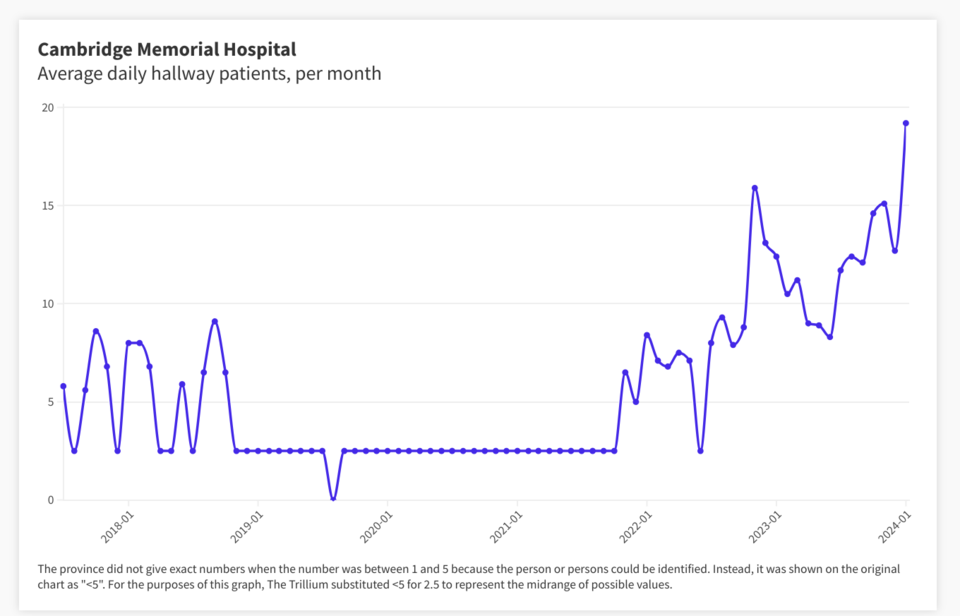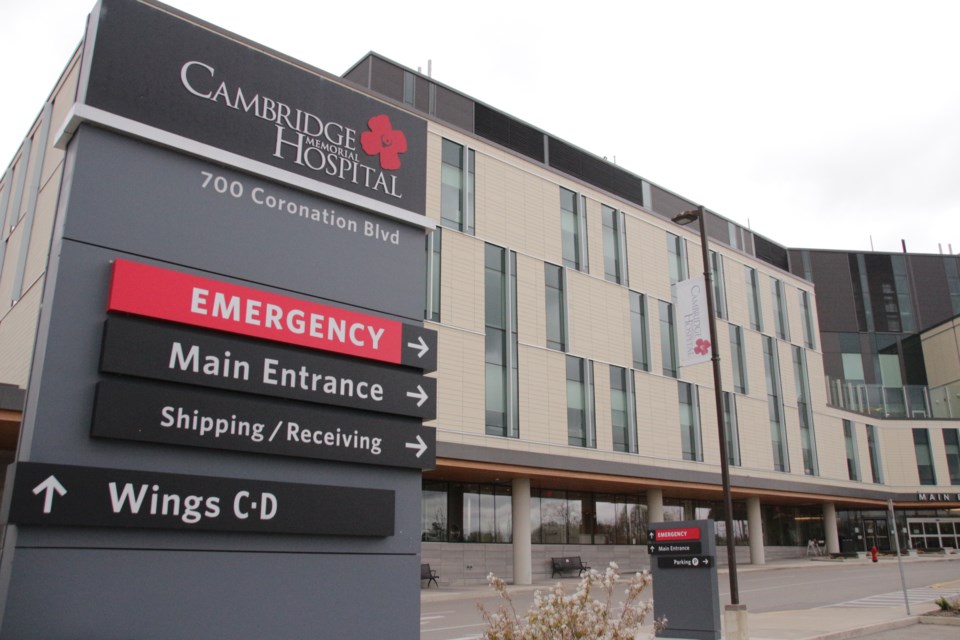Recent data obtained by Village Media shows a spike in the number of people experiencing hallway health care at the beginning of the new year at Cambridge Memorial Hospital.
According to statistics from Ontario Health, the average daily hallway patients at CMH reached 19.2 in January 2024.
For comparison, between September 2019 and October 2021, the number stayed consistently below five.
When reached for comment about the increase, CMH manager of public affairs and communications, Stephan Beckhoff, pointed to higher acuity and an inadequate number of long-term care beds as significant contributing factors.
He also noted that the Cambridge specific data was for admitted patients being held strictly in the emergency room that were there until a bed became available.
"CMH is experiencing similar conditions that many other Ontario hospitals are facing," Beckhoff said in an email to CambridgeToday.
Ontario Health changed the definition of hallway health care on Feb. 18, 2020, to include patients held in unconventional spaces outside the emergency department. Previously, only patients in the emergency department counted toward the total.
It was a move toward greater transparency, said a source with deep expertise in emergency medicine.
The source said some hospitals have over-capacity protocols, meaning instead of housing all the hallway patients in the emergency department, the hospital will spread the risk around by putting a few patients in each ward. The pre-February 2020 definition didn’t capture those patients.
Only some hospitals do this, and those that do usually only do it under extreme circumstances, so the number of patients captured by this updated definition is small relative to those in emergency departments, the source said.
Because the numbers are relatively small, the updated definition likely doesn’t have a big impact on the overall trajectory of the graph, the source said.
The data is presented by hospital corporations, not individual hospitals, which makes it impossible to do an actual hospital-by-hospital comparison.
Hospital corporations can include a single hospital or multiple hospitals coupled with other health-care centres, like rehab or mental health clinics, managed by the same board of directors. Ontario has 140 hospital corporations.
The data set was self-reported by hospitals and it was noted that the information could contain errors.

Beckhoff said a local population surge means CMH is seeing greater demand from higher acuity patients in its emergency department every day, with many needing admissions into a hospital that is already at 100 per cent capacity.
"Furthermore, we have seen an increase in patients no longer needing hospital care, waiting to be transferred to a long-term care facility," he said.
The hospital has also been dealing with a decreased footprint since 2020 due to construction of its B Wings. With the work set to be complete in 2025, Beckhoff is hopeful regaining that space can reduce some of the backlog.
"We believe some of these pressures will be alleviated when construction is completed in 2025," he said.
"All of these factors have kept admitted patients in our Emergency Department for longer periods, which coincidentally lengthens wait times for those needing outpatient emergency care."
In the meantime, the hospital is working with the Cambridge North Dumfries Ontario Health Team and Ontario Health atHome to assist patients with their transition from hospital to home, although Beckhoff didn't elaborate on the specifics of the partnerships.
